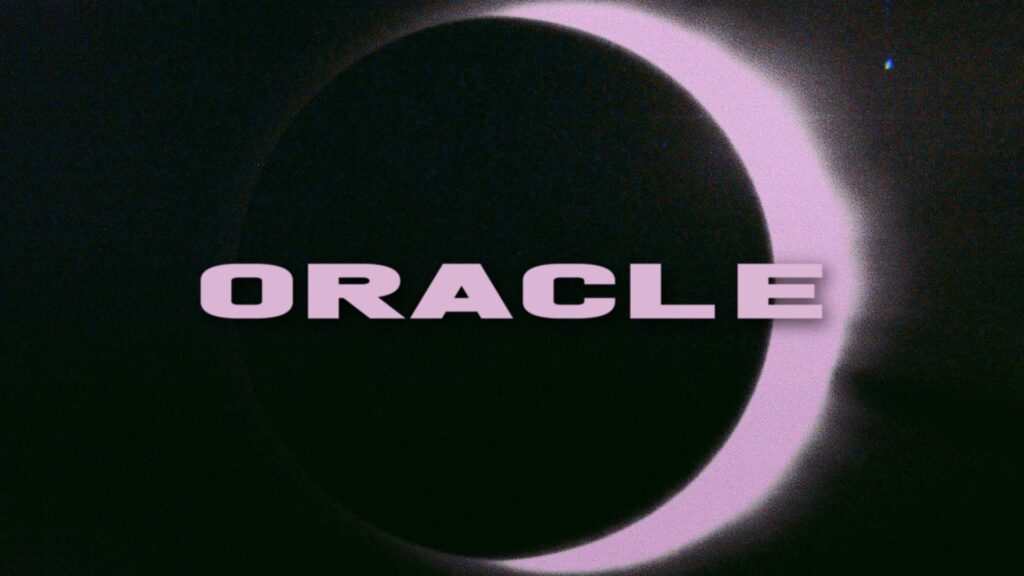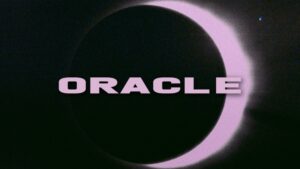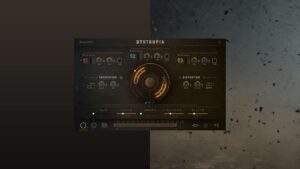A Mono/Poly Symphony
When Teletone Audio drops a new instrument, I pay attention. They’ve long been one of my favorite developers in the sample-based virtual instrument world — especially when it comes to the non-orchestral side of things. Their releases always have that unmistakable vibe; a certain emotional precision and sonic personality that’s hard to describe but instantly recognizable.
Oracle continues that tradition — while also breaking new ground.
Subtitled “A Mono/Poly Symphony,” Oracle aims to merge the DNA of iconic vintage monosynths into a polyphonic format. You’ll find sampled waveforms from legends like the Moog Model D, Roland SH-101, Korg MS-20, Sequential Pro-One, and even the Moog DFAM — each carefully captured and shaped into something that’s both true to its origins and refreshingly new.
Design & Interface
Oracle runs in Kontakt Player 7.6.1 or above and weighs in around 5 GB, making it compact for what it offers.
The interface is a study in restraint and elegance — super clean, super clear, and immediately inviting. It feels like a modern synth front panel, but with Teletone’s signature polish. Two sound layers (A and B) form the core, each with its own waveform source, envelope controls, and tuning. Between them lies the Movement section — the beating heart of Oracle’s sound design.
The drag-and-drop LFO system is a standout feature. You can assign modulation to almost anything, draw custom LFO shapes, and create motion or chaos in seconds. It’s deep, but never confusing — “power without the learning curve.” The performance section also includes controls for glide, mono/poly mode, and an excellent “Vintage” drift knob that injects subtle analog instability and life into your sounds.
Sound & Character
Here’s where Oracle truly shines.
From the first few presets, it’s immediately clear: this thing sounds huge.
“It’s so full, so juicy, and yet so crisp and clean. There’s no harshness, no brittleness — just pure analog sweetness.”
Even the most top-end-focused sounds remain pleasant and musical. Teletone somehow balances clarity with warmth — modern precision with vintage soul. That vibe they’re known for? It’s all here, but in a much broader sonic palette.
The Arp section deserves a special mention. The presets range from cinematic pulses to retro game-inspired patterns, all with a tactile and human feel. The bass patches are thick and punchy — perfect for both scoring and production. Leads sing with personality, while pads and plucks manage to be lush without ever getting muddy.
“It’s insane how this can be full, juicy, clean, crisp, and vibey at the same time. It literally ticks all the boxes.”
Versatility & Usability
One of the biggest surprises is just how wide Oracle’s usable range is. Unlike some previous Teletone releases that leaned into a specific aesthetic (like Scarbo), Oracle feels like a true workhorse synth.
You could easily use this for:
- Cinematic scoring
- Synthwave & retro video game music
- Modern pop and hip-hop
- Ambient & experimental sound design
The internal effects — from drive and saturation to lush reverb and delay — round things out beautifully. Everything is intuitive, fast to tweak, and musically rewarding.
Navigation & Preset Management
If there’s one small critique, it’s the preset organization. The “Vibe”-based browsing (e.g., Dreamy, Aggressive, Analog, Dark) means that sounds can appear in multiple folders (as they can have elements from each), which can feel a bit confusing when exploring large sets. That said, for day-to-day creative use, it’s probably a net positive — it helps you find sounds by feel rather than technical category.
Final Thoughts
Oracle feels like a major evolution for Teletone Audio. It captures the best of both worlds — the nostalgic soul of vintage analog and the clean precision of modern digital production.
It’s rare to find a virtual instrument that’s both inspiring to play and ready to mix straight out of the box. This one is.
“It’s the kind of sound that makes me want to write an album around it. I’m stunned by how it can sound vintage and modern, full and clean, all at once. This could easily be the only synth you need, depending on what you do.”
For me, Oracle stands out as one of the most versatile and powerful Teletone instruments yet — a synth that truly oozes vibe and energy.
⚡ Prefer video?
🎥 Full review: https://youtu.be/8fhBDr9Ig5I
🤫 ‘No talking’ edit: https://youtu.be/_LLNuelEA-k





